
What is carbon capture?
Carbon dioxide (CO2) emissions generated by human activities have led to an accumulation of greenhouse gases in the atmosphere that is causing an increase in
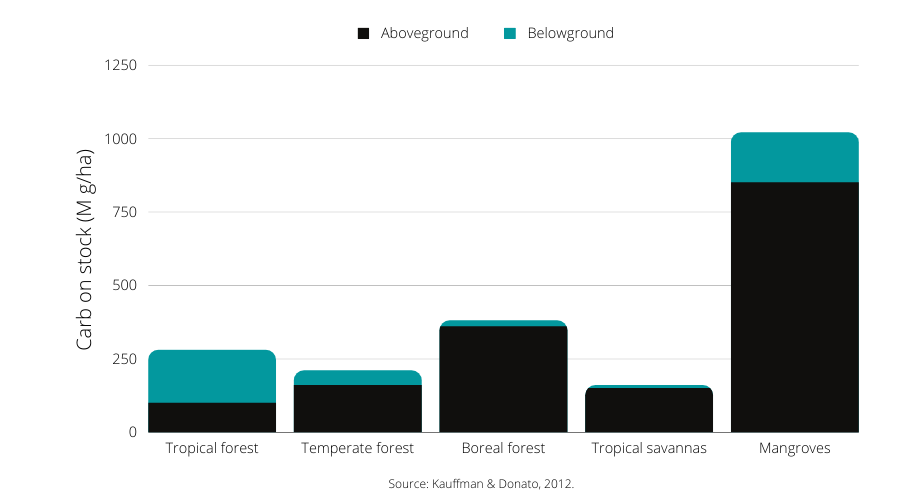
In a global context that seeks to reduce carbon dioxide emissions in the atmosphere, blue carbon credits play a crucial role. The concept of blue carbon refers to capturing carbon dioxide by plants, marine organisms, or biochemical processes that occur naturally in oceans. These natural carbon sinks have captured more than 60 percent of the carbon dioxide emitted by humans over the past 150 years.
However, the oceans’ ability to store carbon dioxide is at risk due to the consequences of climate change. In this article, we will tell you what blue carbon is, how natural carbon sinks work and how blue carbon credits can help prevent the negative effects of climate change on these natural ecosystems.
What are blue carbon credits?
Blue carbon credits are projects that seek to conserve and restore natural blue carbon sinks. Their main objective is to remove atmospheric carbon dioxide or prevent the release of carbon stored in the seafloor. Blue carbon credits represent a fundamental tool for climate change mitigation in the upcoming years.
How do blue carbon sinks work?
Blue carbon refers to organic carbon captured and stored in oceans, coastal ecosystems, and seafloors. In the case of wetlands, mangroves, or marine plants, carbon is captured through photosynthesis. This process consists of a chemical reaction that converts carbon dioxide into oxygen and sugars, essential for the growth of plants and marine organisms. This reaction only takes place in the presence of light.

Some microorganisms that live near the oceans’ surface belong to a group of organisms called phytoplankton. These also grow through photosynthesis and represent the base of the food chain of aquatic ecosystems.
In the case of marine plants, mangroves, and wetlands, they deposit part of the carbon captured in the soil as they grow. This carbon, fixed in soils, remains there for thousands to millions of years, and it is what we call blue carbon.
In the case of phytoplankton, they convert carbon dioxide into organic matter to form the structure of these marine microorganisms. The phytoplankton then dies or is consumed by other aquatic species as part of the food chain. Once these marine species decompose, their skeletons reach the seafloor where layers of sediments start to cover them in a process that lasts thousands of years. The deeper the phytoplankton or skeleton goes, the longer it remains stored.
At this point (and not before), the phytoplankton is considered to have fixed the blue carbon on the seafloor. However, sometimes, the sediment layer is insufficient to fix the carbon, so it is released back into the ocean. For this reason, the most efficient blue carbon producers are seagrasses, wetlands, and mangroves.
Oceanic blue carbon sinks
Blue carbon credits seek to protect all ecosystems that have stored carbon on the ocean floor over thousands of years.
According to the latest IPCC report, oceans have sequestered more than 60% of the carbon dioxide emitted by humans over the last 150 years. This is not only due to carbon capture by marine plants and phytoplankton during photosynthesis but also to other biochemical processes that occur in the oceans.
Some examples are the following:
Coral reef formation
Atmospheric carbon dioxide dissolves in water through a chemical reaction essential for the growth of many marine structures. In this reaction, carbon dioxide reacts with water to give carbonic acid. Carbonic acid is the precursor of calcium carbonate, a compound essential in the formation of coral reefs.
Marine algae (macro-algae)
Algae are also organisms that capture carbon dioxide through photosynthetic processes. As a result, algae capture large amounts of carbon and fill more marine surface area than any other aquatic organism.
However, the carbon sequestered by both corals and algae is not always considered blue carbon. This is because they do not meet some of the criteria to be considered blue carbon ecosystems. These criteria are:
In the case of phytoplankton, there is no scientific agreement on whether they should be considered blue carbon ecosystems or not. This is because much of the carbon captured by these organisms does not end up being fixed as blue carbon.
On the other side, some algae species emit carbon dioxide in their metabolism. Therefore, the balance between carbon captured and emitted is often not significant enough to consider them natural carbon sinks.
Carbon sequestration in blue carbon ecosystems
In the last decade, blue carbon credits have become increasingly important. This is because marine plants and organisms are much more efficient than terrestrial ones at sequestering carbon dioxide.
Scientific studies show that mangroves and wetlands can sequester up to 10 times more carbon dioxide per unit area than forests or jungles. Therefore, any negative impact on them could release large amounts of carbon dioxide emissions into the atmosphere, contributing significantly to climate change.
The following graph corresponds to a scientific study that compares the total carbon stored in different terrestrial and marine structures. Results show that most carbon stored in boreal forests, tropical savanna, and mangroves corresponds to the belowground organic-rich soil.
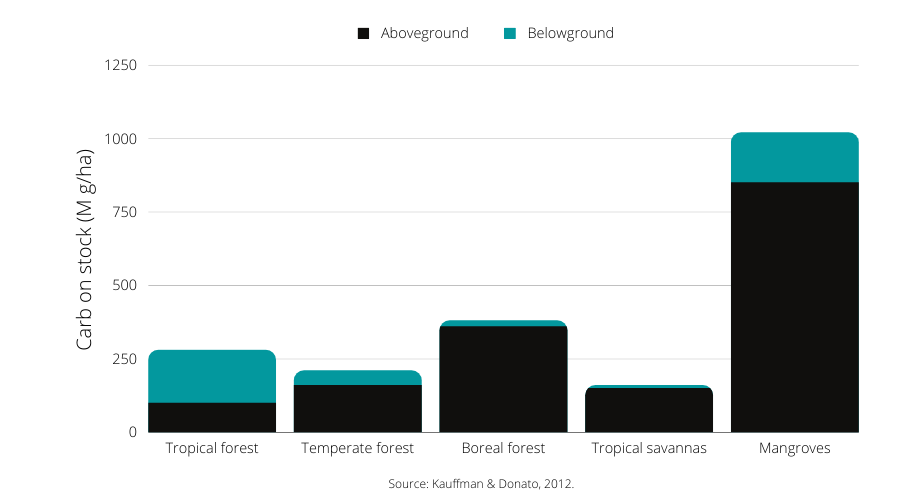
The price of blue carbon credits
Currently, the market for blue carbon credits represents a fraction of the market for conventional carbon credits. However, these credits’ price is much higher than other carbon offset projects. This is because, in addition to offsetting their emissions, many companies seek to generate positive impacts on the environment through offsetting.
This is the case of blue carbon credits, which, in addition to capturing high amounts of atmospheric carbon dioxide, have different environmental benefits for the communities and ecosystems surrounding these projects. Some of the additional benefits of blue carbon ecosystems are:
- Prevention of flooding of protected areas
- Reduction of environmental impacts from storms or extreme weather events.
- Conservation of biodiversity in wetlands and oceans.
- Filtration of pollutants that could alter the functioning of the ecosystem.
– Capturing of sediments that contribute to protecting the roots of different plants from erosion processes that would otherwise affect their growth.
– Creation of favorable habitats for the growth of marine fauna. This contributes to food security for local communities that live near the ecosystems.
Importance of blue carbon credits in the face of climate change consequences
In a world where the consequences of climate change are imminent, blue carbon credits are key. These projects seek to protect blue carbon sinks from human interventions and some of the natural events that will take place over the coming years.
The consequences of climate change will directly affect the ability of blue carbon ecosystems to capture and store atmospheric carbon dioxide.
Some examples of these consequences will be:
Sea level rise
As mentioned above, one essential requirement for plant photosynthesis is sunlight.
Sea level rise could decrease the amount of sunlight that reaches marine plants. This is a direct threat to their ability to capture carbon dioxide and, therefore, to reproduce.
On the other hand, sea-level rise could also wash away the sediments in mangroves. In addition to protecting plant roots, these are key to retain organic carbon in oceanic soils. To do this, they form organic compounds of minerals and carbon. If these sediments were to disappear, this carbon could undergo a process of decomposition by microorganisms in the ecosystem. This process would release carbon dioxide as part of the microorganisms’ metabolism, thus contributing to global warming.
Extreme weather events
Another imminent consequence of climate change is the increase in the frequency and intensity of extreme climate events. These events could directly affect some natural blue carbon reservoirs. For example, heavy storms that damage the ecosystem’s vegetation could contribute to releasing some of the carbon stored there.
Ocean acidification
The dissolution of high amounts of carbon dioxide in oceans leads to a process called acidification. This process lowers the pH of these marine bodies and the production of calcium carbonate, essential for the formation of marine corals.
Marine corals serve to protect shallow lagoons from incoming waves. This allows the growth of seagrasses that would be seriously affected by the impact of waves.
Ocean acidification directly affects the ability of corals to reproduce and thus protect seagrasses and wetlands. This, coupled with sea-level rise, could have catastrophic consequences for these blue carbon sinks.
Conclusion
All negative effects of climate change on natural blue carbon sinks can be mitigated through conservation projects in natural areas. Hence, the importance of blue carbon credit projects and their positive impacts in the near future, both on natural habitats and in the quality of life of the people who depend on their ecosystem services.
References
IPCC, AR6 Climate Change 2021: The Physical Science Basis.
Macreaide, P. The future of Blue Carbon science. Nature Communications 10, 3998 (2019).
Lovelock, C. & Duarte, C. Dimensions of Blue Carbon and emerging perspectives. Biology letters 15,3 (2019).
Kauffman, J. & Donato, D. Protocols for the measurement, monitoring
and reporting of structure, biomass and carbon stocks in mangrove forests. Center for International Forestry Research 86 (2012).
Segman, R.F. Impacts of ocean acidification on calcifying macroalgae: Padina sp. as a test case – a review. Israel Journal of Plant Sciences (2016).
Fassuli, S. Blue carbon’ gains interest in effort against greenhouse gases, but challenges remain. S&P Commodity Insights (2021).
Spivak, A. et al. Global-change controls on soil-carbon accumulation and loss in coastal vegetated ecosystems. Nature Geoscience 12, 9 (2019).
Saunders, M. Interdependency of tropical marine ecosystems in response to climate change. Nature Climate Change 4 (2014).

Carbon dioxide (CO2) emissions generated by human activities have led to an accumulation of greenhouse gases in the atmosphere that is causing an increase in
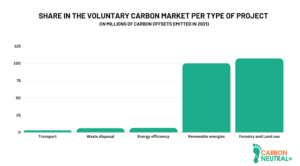
According to the Emissions Gap Report 2022, the growth rate of global greenhouse gas (GHG) emissions has declined over the last decade. Between 2010 and
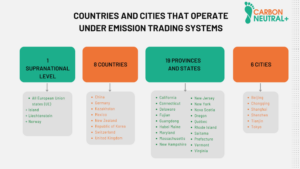
As international agreements related to corporate greenhouse gas emissions (GHG) come into force, the regulations associated with the generation of these emissions increase. This is
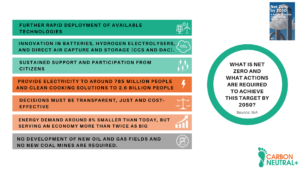
Climate change is one of the greatest concerns of our time. This phenomenon is generating consequences that are difficult to reverse, such as an increase

The Paris Agreement is an international agreement adopted on December 12, 2015 during the United Nations Climate Change Conference (COP21) in Paris, France. One of
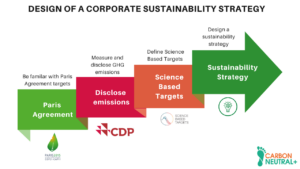
As the world faces the looming effects of climate change, more and more companies are recognizing the importance of adopting sustainable strategies that aim to
| Cookie | Duration | Description |
|---|---|---|
| cookielawinfo-checkbox-analytics | 11 months | This cookie is set by GDPR Cookie Consent plugin. The cookie is used to store the user consent for the cookies in the category "Analytics". |
| cookielawinfo-checkbox-functional | 11 months | The cookie is set by GDPR cookie consent to record the user consent for the cookies in the category "Functional". |
| cookielawinfo-checkbox-necessary | 11 months | This cookie is set by GDPR Cookie Consent plugin. The cookies is used to store the user consent for the cookies in the category "Necessary". |
| cookielawinfo-checkbox-others | 11 months | This cookie is set by GDPR Cookie Consent plugin. The cookie is used to store the user consent for the cookies in the category "Other. |
| cookielawinfo-checkbox-performance | 11 months | This cookie is set by GDPR Cookie Consent plugin. The cookie is used to store the user consent for the cookies in the category "Performance". |
| viewed_cookie_policy | 11 months | The cookie is set by the GDPR Cookie Consent plugin and is used to store whether or not user has consented to the use of cookies. It does not store any personal data. |